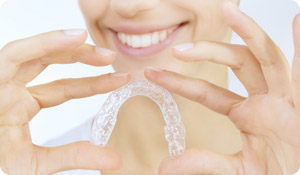
Coffee, wine, and age can do a number on your pearly whites, leaving them dingy, yellow, and stained. Advertisers claim that teeth whitening, which the American Dental Association (ADA) describes as any process that makes teeth appear whiter, will improve the look of your teeth and smile.
How do tooth whiteners do this? Many contain peroxide-based bleaching products that change the natural tooth color—peroxide helps remove deep and surface stains. Non-bleaching tooth whiteners remove surface stains deposited on the tooth. But are tooth whiteners safe, and which method is best? Jeffrey Wolfe, DDS, dentist at Kaiser Permanente in Portland, OR, has the answers:
Is it safe to whiten your teeth? "Yes. All the studies we’ve seen over many years indicate that tooth whitening is safe," says Wolfe, who stresses that tooth whitening must be done properly, and according to directions.
What’s the best method? The most effective way to whiten your teeth is with peroxide-based bleaching products. These are dispensed either through your dentist’s office or purchased over the counter.
If you purchase dental trays from your dentist, this process will require two office visits to create custom-made trays that are then filled with peroxide bleaching gel and placed on the teeth for two hours a day. In two weeks, the teeth will be whiter and brighter.
Over-the-counter peroxide-based teeth whiteners include Crest’s whitening strip products, which can be purchased in drug stores. Wolfe says these contain 10 percent peroxide in adhesive strips that are applied to the teeth. Used twice a day for approximately 30 minutes at a time, whitening strips can lighten teeth six shades in about two weeks.
Should I use dental trays or whitening strips? That depends on your budget and the effects you’re trying to achieve. Dental trays filled with whitening agents contain a higher concentration of peroxide, which may allow teeth to lighten faster and better than over-the-counter products. "Whitening strips work well for many people, but if your teeth are crooked, it’s hard to get strips to adhere evenly," explains Wolfe. In addition, "Strips are designed to cover only the most-visible teeth in front. So, if you want your molars and back teeth whitened too, you have to use dental trays."
What about laser, Zoom or light-activated processes? According to the ADA, these products use hydrogen peroxide in concentrations ranging from 25 percent to 40 percent and are sometimes used together with a light or laser to accelerate—or activate—the whitening process. However, most studies have reported no additional long-term benefit with light-activated systems.
Wolfe agrees: "These light-activated techniques work about as well as the other methods, but they may also increase tooth sensitivity. Bleaching teeth gradually over time with whitening strips or dental trays can also obtain good results."
Are there any side effects to teeth whitening? Other than temporary increased sensitivity to cold and heat, there are no side effects to teeth whitening.
Consult your dentist before starting a whitening process, and be sure you get regular cleanings and check ups to maintain optimal dental health.
Jeffrey Wolfe, DDS, reviewed this article.
Sources
"Statement on the Safety and Effectiveness of Tooth Whitening Products." American Dental Association. April 2012. http://www.ada.org/1902.aspx
Jeffrey Wolfe, DDS, Kaiser Permanente, Portland, OR. Email interview March 2014.





